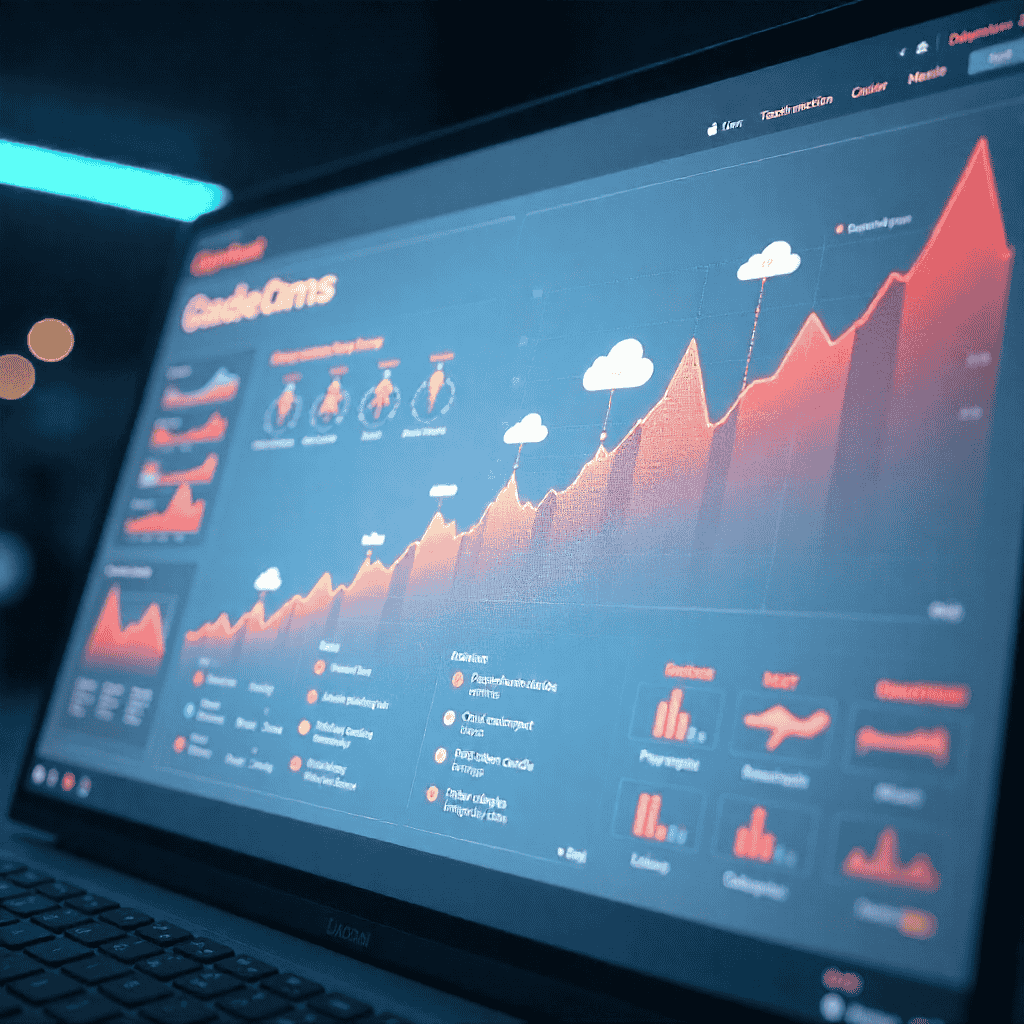
『 ZORO 』
5 months ago
Generative AI Trends 2025: Scaling LLMs & Enterprise AI Adoption
Enterprises are rapidly moving beyond narrow pilots. Instead, they’re strategically integrating LLMs into workflows, governance, and decision systems—pushing GenAI toward maturity.

1. LLMs in 2025: Scaling Up, Down, and Out
LLM proliferation isn’t just about bigger models. According to Stanford’s 2025 AI Index, training compute doubles every five months, datasets every eight, and efficiency gaps between top models are shrinking rapidly.
Scholars propose a new paradigm—AI model scaling now includes “scaling down” (lightweight models) and “scaling out” (distributed/specialized workloads) to enhance efficiency, sustainability, and enterprise access.
2. Enterprise AI Adoption Soars in 2025
Gartner forecasts that over 80% of enterprises will deploy generative AI applications or APIs by 2026—a steep rise from only 5% in 2023.
McKinsey reports that generative AI usage across businesses jumped from 33% overall to 78%, with marketing, IT, and operations leading the way.
Real-world outcomes are evident:
- JPMorgan Chase reduced fraud using LLMs
- Walmart optimized inventory and reduced stockouts
- UnitedHealth automated claims processing
- FedEx enhanced route and delivery times
3. AI Model Scaling & Infrastructure Evolution
Enterprise-grade AI innovation hinges on infrastructure. The latest review of cloud platforms (AWS, Azure, Google Cloud, IBM, etc.) highlights the rise of GPU clusters, edge computing, serverless architectures, and advanced storage technologies to support generative workloads.
Cerebras recently set new benchmarks in inference speed—powering Llama models 18× faster than GPU alternatives—highlighting how specialized hardware drives model scaling.
4. Challenges: AI Sprawl and Governance Gaps
Rapid adoption comes with complexity. TechRadar warns of unchecked “AI sprawl”—multiple tools without unified governance—leading to inefficiencies, security concerns, and siloed systems.
Enterprise leaders face hurdles. As per ModelOp, only 14% of organizations enforce AI assurance. Without robust governance, scaling becomes risky.
5. Interoperability via LLM Standardization
To curb tooling fragmentation, OpenAI and DeepMind adopted the Model Context Protocol (MCP) in early 2025. MCP sets a standard for multi-model interoperability—simplifying how enterprises connect LLMs to APIs, databases, and workflows.
By bridging models with tools—like Microsoft’s COPILOT and Azure system integration—MCP is enabling seamless enterprise AI orchestration.
6. Enterprise Readiness: Governance, Training & Leadership
Analysis from McKinsey and ICONIQ underlines that deploying generative AI at scale requires robust governance, AI literacy, and leadership alignment. Stylish governance frameworks amplify performance and ROI.
CIO insights (a16z) emphasize proactive construction of AI buying/building strategies for 2025—grounded in safety, scalability, and metrics.
Experts Weigh In & Market Reality
Business Insider profiles enterprise AI leaders shaping the new era—from Mastercard’s fraud bots to IKEA’s AI education rollout—illustrating how generative AI is both utility and strategy.Meanwhile, Gartner reports AI sprawl is giving way to integrated AI architecture as core business infrastructure.
Upskill for Generative AI Trends 2025 with AI CERTs
As organizations race to capitalize on Generative AI Trends 2025, cultivating the right skills is essential. AI CERTs offers targeted certification paths that align directly with enterprise needs. For professionals steering AI adoption or scaling LLMs, the AI+ Developer™ certification covers vital concepts—Python proficiency, NLP, computer vision, cloud deployment, and hands-on model building including LLMs. For business leaders aiming to guide AI-driven transformation, the AI+ Executive™ program teaches strategic frameworks, governance, and implementation guidelines tailored for leadership roles. Each program delivers practical training and a recognized credential designed to strengthen your role in enterprise AI adoption.
Explore these offerings:
- AI+ Developer™ — Master generative AI engineering and deployment at your pace.
- AI+ Executive™ — Lead AI-driven initiatives with strategic competence and governance know-how.
Conclusion
Generative AI Trends 2025 are not just stories—they define the enterprise roadmap. From scaling strategies (up, down, out), infrastructure evolution, and governance to interoperability and leadership commitment, the shift is active and enduring.
As enterprises iterate with models, data, and tools, the winners will be those implementing integrated, scalable, and trusted AI systems—setting generative AI as not only smart but sustainable.
Source-



